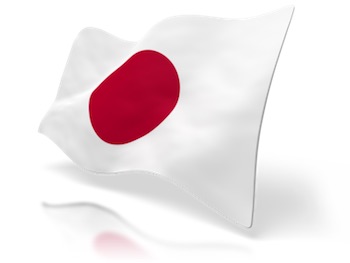 Despite the collective hand-wringing of economic prognosticators over Japan’s phantom recession and sluggish growth, household spending in the world’s third largest economy is one signal the country remains a strong candidate for business development. Japanese consumers, whose purchasing power makes up roughly 60 percent of the country’s GDP, have been called “more powerful than U.S. consumers”—an assertion bolstered by last quarter’s report of steady unemployment (3.2 percent) and year-over-year wage growth (0.7 percent).
Despite the collective hand-wringing of economic prognosticators over Japan’s phantom recession and sluggish growth, household spending in the world’s third largest economy is one signal the country remains a strong candidate for business development. Japanese consumers, whose purchasing power makes up roughly 60 percent of the country’s GDP, have been called “more powerful than U.S. consumers”—an assertion bolstered by last quarter’s report of steady unemployment (3.2 percent) and year-over-year wage growth (0.7 percent).
Even with a slight decline in patent filings over the past few years, Japanese businesses play a significant role in their home economy and in innovations worldwide. According to the most recent edition of the World Intellectual Property Indicators, companies based in Japan account for 55 of the top 100 global patent applicants, with Panasonic leading the list. This group of global innovators filed more than 450,000 patents abroad.
For non-residents, getting an invention to market in Japan is no small task. Filing patents there can pose significant challenges. More than cultural and language barriers, unique Japanese filing requirements and an unforgiving post-grant landscape could undo even the best and brightest market opportunities. Avoid the hassle and heartburn with these seven things that will help prepare you for filing in Japan:
1. Japan is a first-to-file system
According to Japanese patent law, the first party that files to protect intellectual property (IP) gets the patent. The inventor submits to the JPO the following:
- a request
- a specification
- claims
- any necessary drawings
- the abstract
The law dictates that you can file the application in English as long as you submit a Japanese translation within 14 months of the filing or the priority date.
Japanese patent law allows a six-month grace period for disclosures if made through experiments, publications or a presentation at an exhibition or study meeting, or when the invention unintentionally—or against your will —becomes known to the public. These disclosures aren’t part of the prior art. This exemption is broader than what is available under European patent law, but much narrower than U.S. law provides.
2. Unless your offices are in Japan, you must hire a foreign patent agent
Unlike most countries, Japan requires enterprises with offices outside of the country to engage a patent agent (usually an attorney) who resides in Japan. In many ways, this foreign agent acts as a project manager to ensure the patent-filing process, including translation, goes smoothly.
Because of the direct relationship and close geographic proximity, one of the most effective ways to hire a patent agent is through a translation provider with a Japanese address. Translation providers with centralized project management often work closely with foreign agents to ensure critical deadlines are met. The translation and filing process becomes more streamlined if foreign agents and translators report to a single point of contact.
3. Translating into—and from—Japanese is difficult
Even though Japanese has been a leading language for technology patents for years, it still has one of the highest translation error rates. A study by the Steinbeis Transfer Institute of Stuttgart, Germany concluded that Japanese is one of the top two languages (Chinese is the other) prone to IP translation inaccuracy.
One of the primary complications of translating into Japanese is the four different character sets in the written language:
- the phonetic hiragana
- the phonetic katakana
- the traditional Chinese character-based kanji
- the Romanized western alphabet
In many cases, translators can express technical terms using more than one character set in an application or even in the same sentence, creating potential for different interpretations (e.g. translators and patent prosecutors often interpret kanji more narrowly than katakana).
As a result, a combination of highly skilled translators—people on the ground who know the language, culture and filing process—and a terminology management system that enables the reuse of previously translated content is needed to attain the highest level of accuracy and consistency for your translated patent.
4. You must submit a Request for Examination within three years—no exceptions
Filing patents in Japan also requires multiple post-filing steps. For example, you must submit a Request for Examination to the JPO within three years of filing the application to finalize the filling and establish its readiness for review by the JPO. If the deadline is missed, the JPO will consider the application withdrawn, without exception.
5. Japan has unique prior art requirements
Published Japanese patents contain crucial information that needs to be reviewed when filing a patent in Japan. However, these previous patents are in Japanese, making the research process extremely challenging for foreign filers.
The European Patent Office has a Japanese IP translation system that can simplify the search for prior art by providing near automatic Japanese-to-English translations. However, be warned: Although useful for searching prior art, this tool isn’t recommended for translation of the patent application itself. Machine translation can actually cause more errors that lead to increased risk of litigation, narrowing of patent scope, invalidation, office actions and much slower time to grant. Successful patent authors use this tool as a way to identify prior art that can be translated to ensure they base their own patent claims on technically and linguistically accurate translations.
6. Japan’s grant rate has declined—but it’s still high
In 2014, Japan granted 227,100 patents, behind only the United States and China. Although counter-intuitive, more risks can be associated with patents into foreign jurisdictions with a high grant rate. Consider this: When countries have a higher grant rate, enterprises that file similar patents face a higher risk of costly litigation. To reduce this risk, carefully vet your translation provider for in-country translators with expertise in the subject matter of your invention.
7. Japan reintroduced its Post-Grant Opposition System in 2015
Japan provides two ways to challenge a patent’s validity:
- Invalidation Trial: After a patent is issued, a demanding party can ask for an invalidation trial at any point in time. Documents and oral testimonies from parties involved in the trial are allowed, culminating in a ruling by a panel of three JPO trial examiners. Either party may appeal the decision to the IP High Court.
- Opposition System: As of April 2015, an opposition to a patent can be filed within six months of issuance, allowing the JPO to review and revoke (if necessary) a recently granted patent as soon as possible. If the JPO revokes the patent under this new system, you can appeal to the IP High Court. But in the appeal, the JPO will be the opposing party: You will not face the original challenger.
In either case, consider more aggressively monitoring competitors’ Japanese patent applications (with the help of your patent translation provider or patent agent). Budget resources to file oppositions, if necessary.
Filing a patent in a foreign jurisdiction—especially in a country with a complex written language, unique filing requirements and a tightly regulated post-grant system like Japan—can seem daunting. By following these guidelines, you can bypass trouble and minimize risk. And you’ll be one step closer to becoming the next big thing in Japan.

![[IPWatchdog Logo]](https://ipwatchdog.com/wp-content/themes/IPWatchdog%20-%202023/assets/images/temp/logo-small@2x.png)

![[Advertisement]](https://ipwatchdog.com/wp-content/uploads/2024/04/Patent-Litigation-Masters-2024-sidebar-early-bird-ends-Apr-21-last-chance-700x500-1.jpg)

![[Advertisement]](https://ipwatchdog.com/wp-content/uploads/2021/12/WEBINAR-336-x-280-px.png)
![[Advertisement]](https://ipwatchdog.com/wp-content/uploads/2021/12/2021-Patent-Practice-on-Demand-recorded-Feb-2021-336-x-280.jpg)
![[Advertisement]](https://ipwatchdog.com/wp-content/uploads/2021/12/Ad-4-The-Invent-Patent-System™.png)







Join the Discussion
No comments yet.